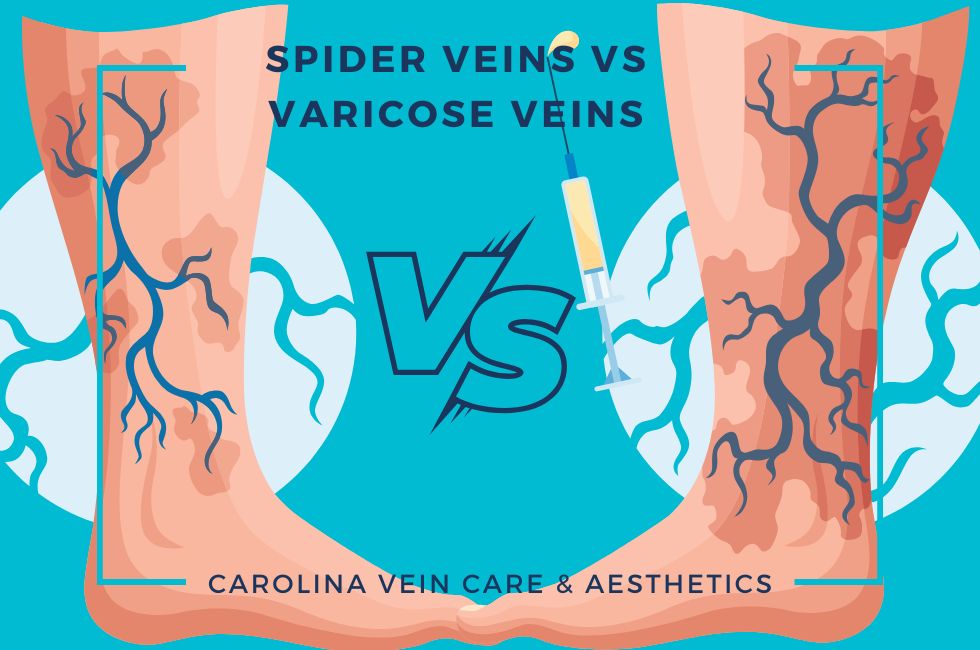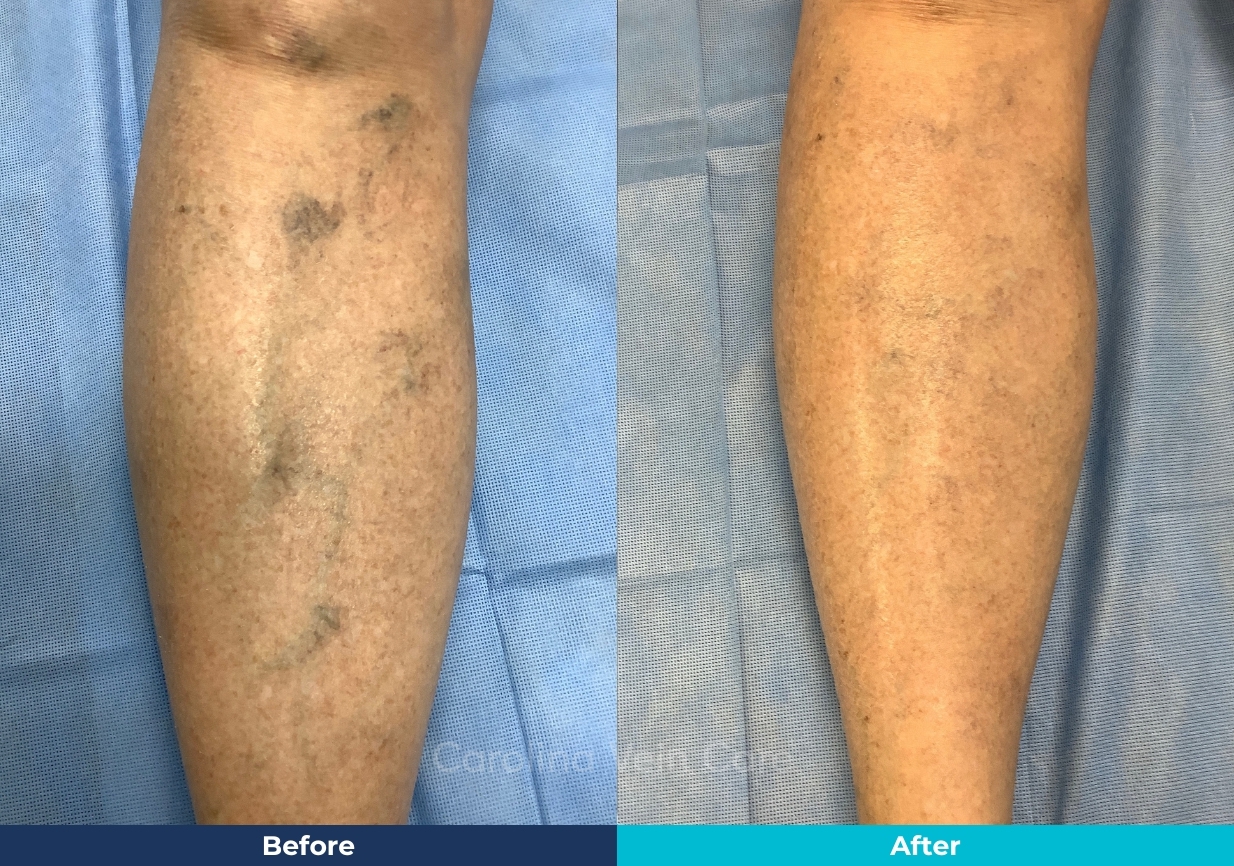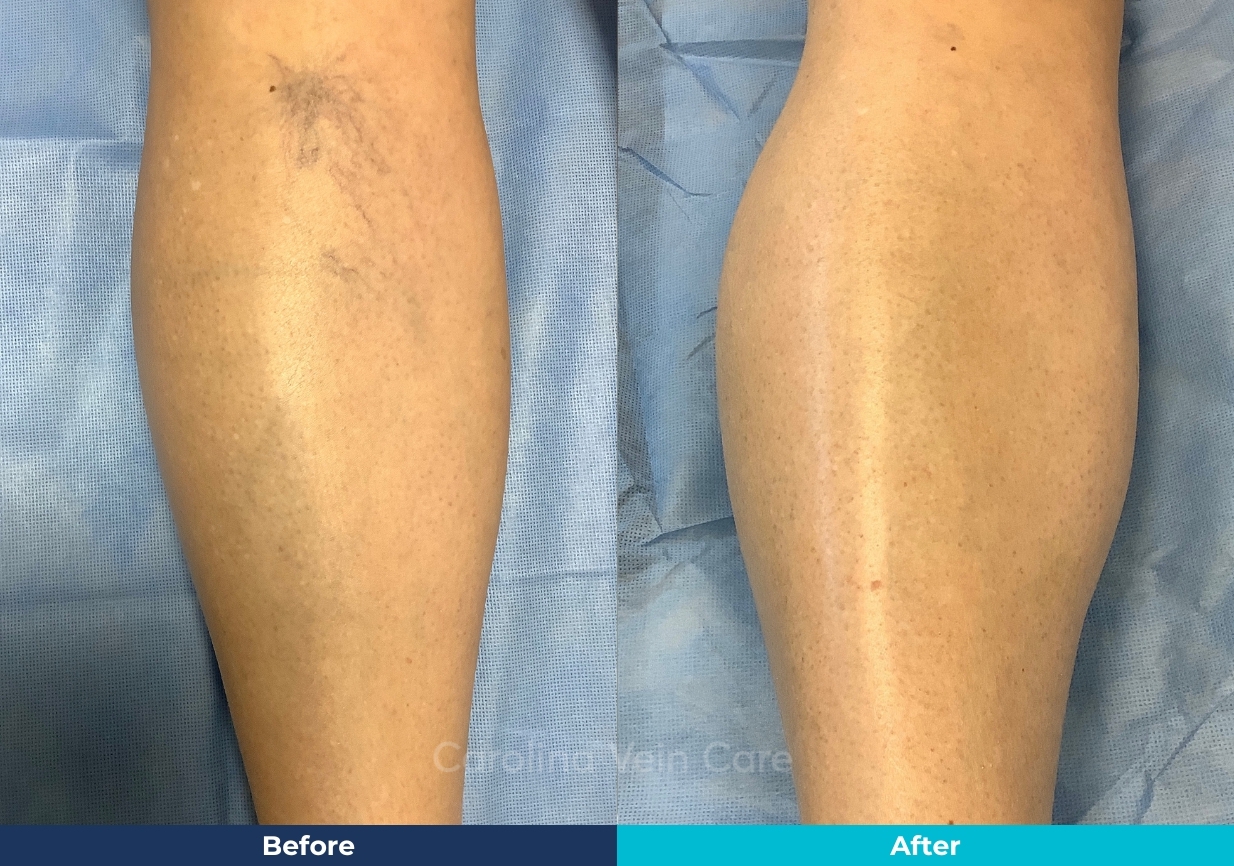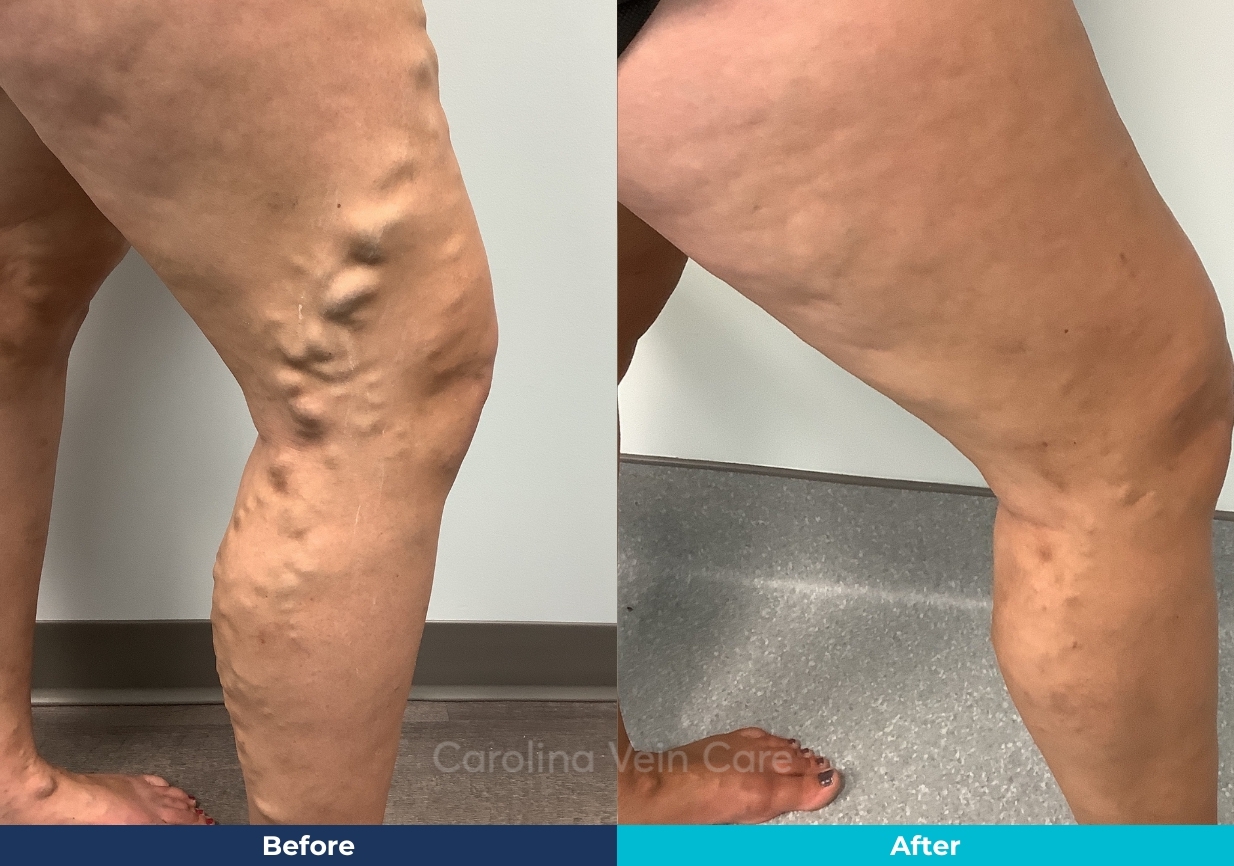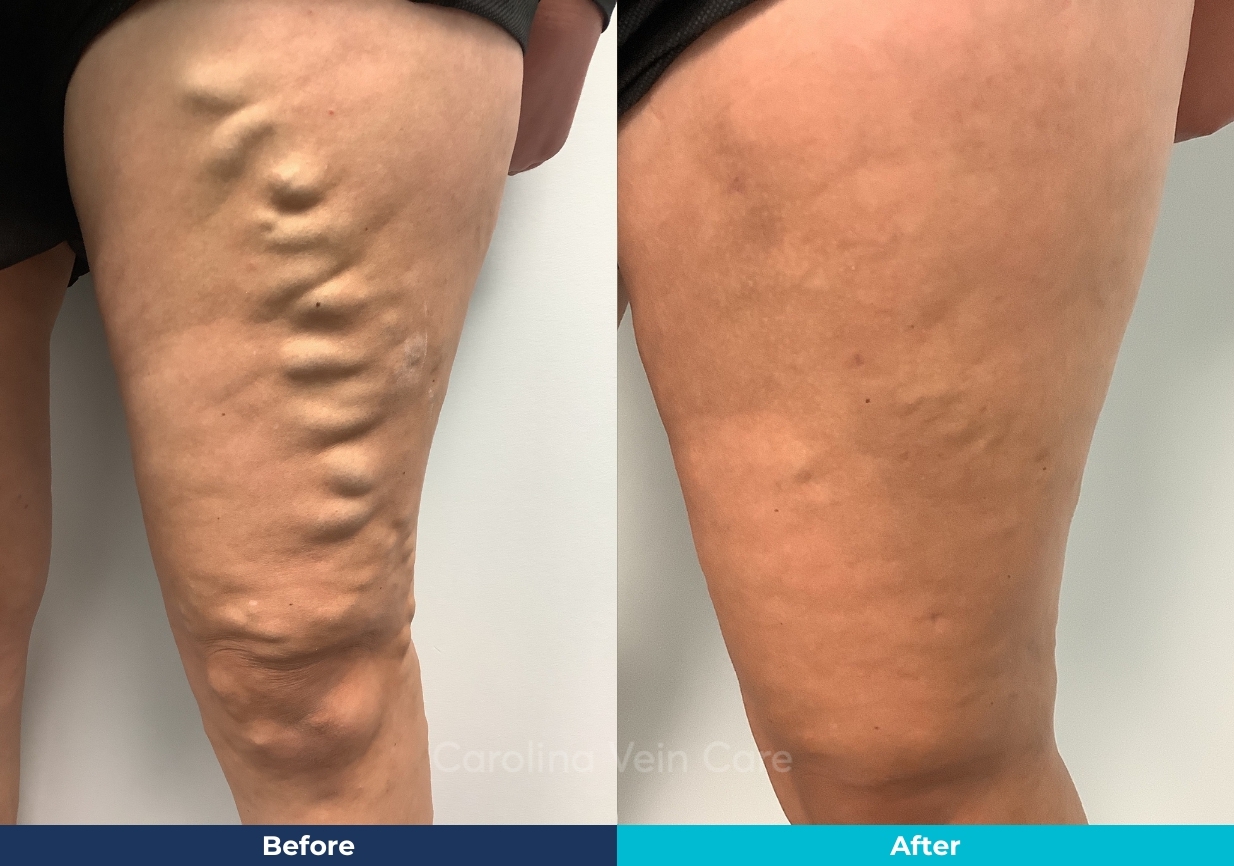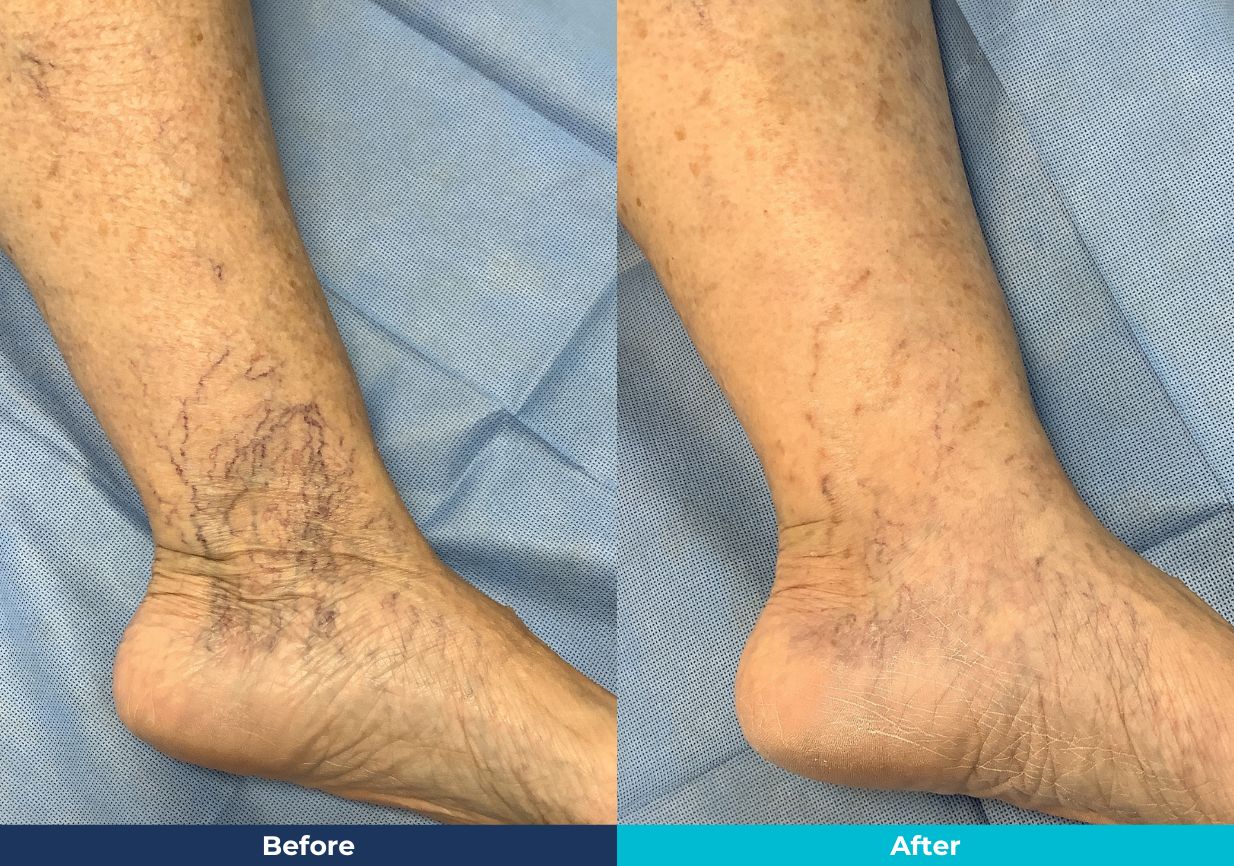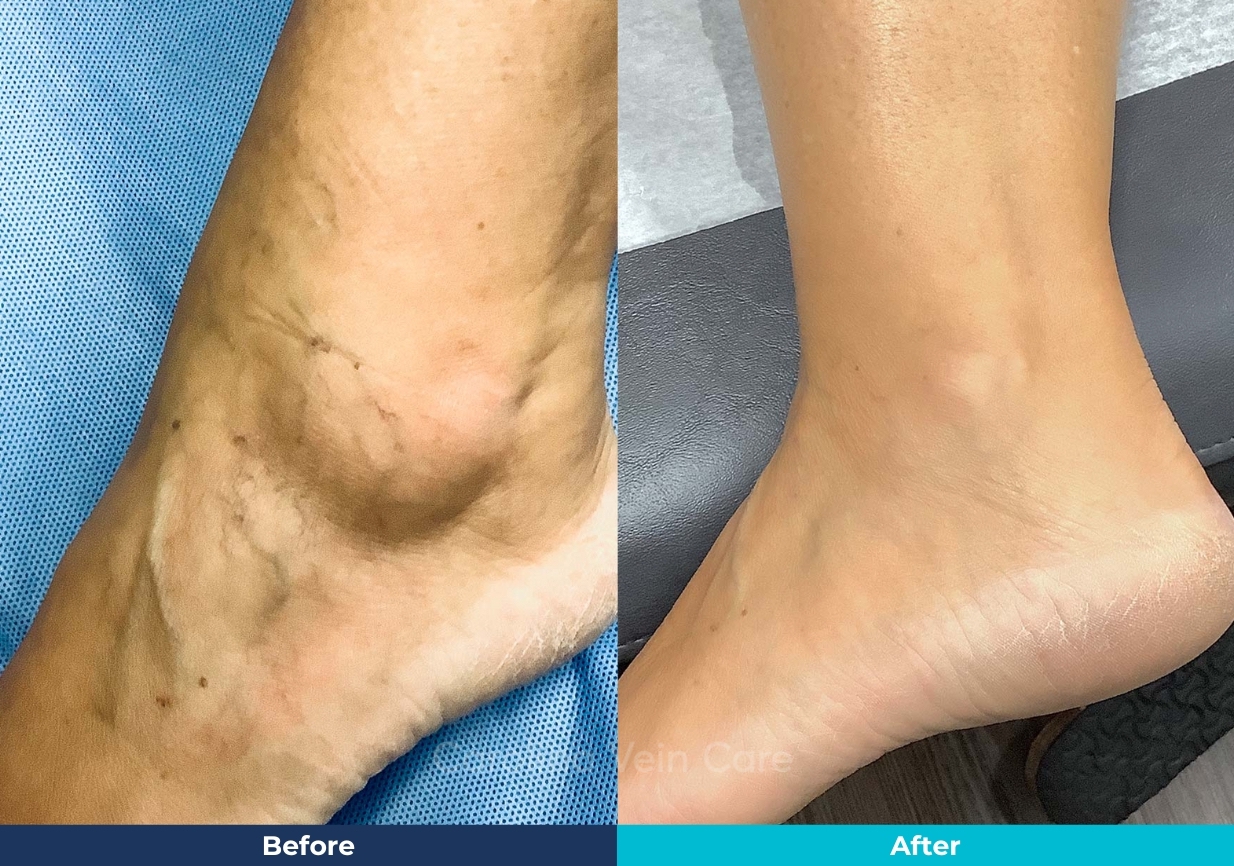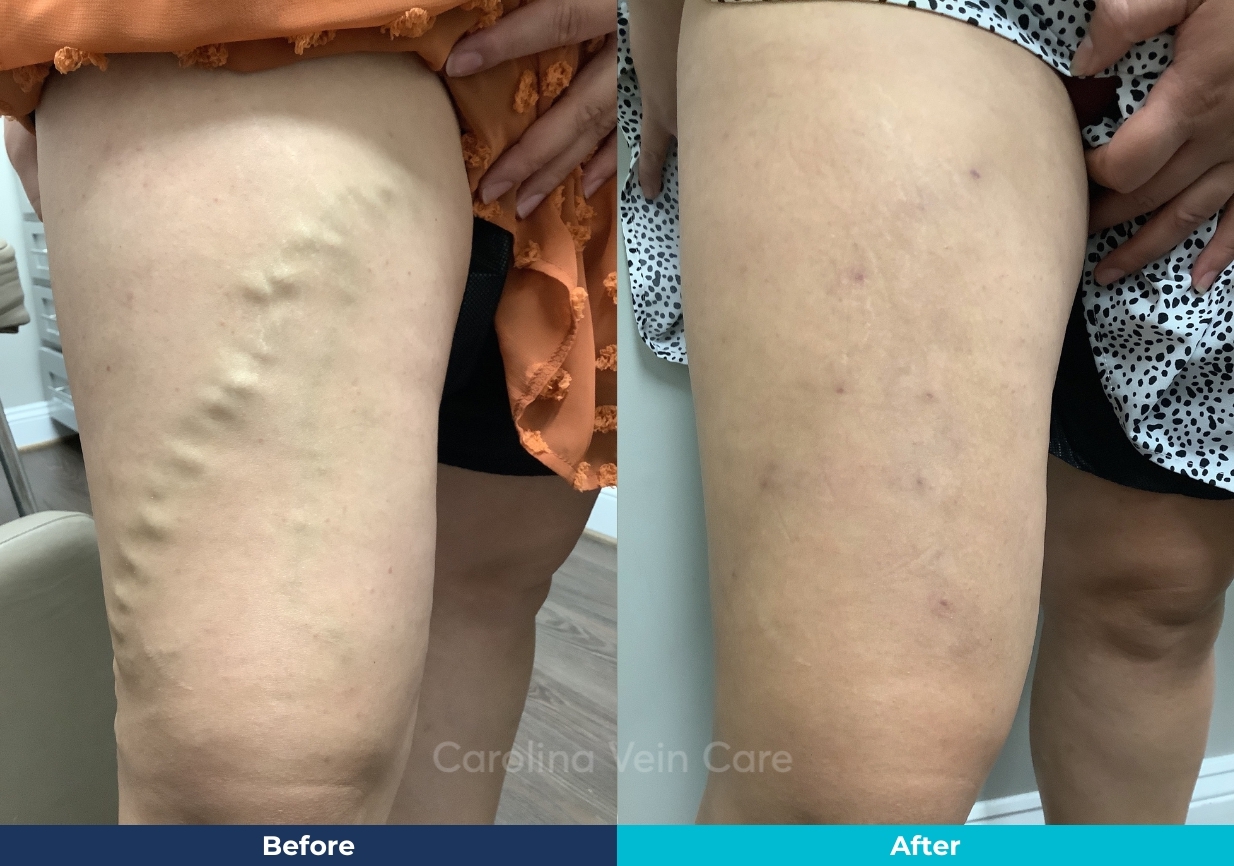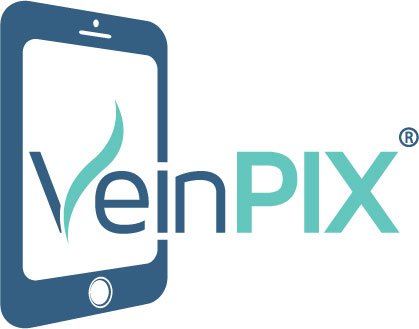Spider veins and varicose veins are often mistaken for one another. While they may look similar at first glance, these two conditions are quite different in terms of their size, depth, symptoms, and the treatment approach they require.
Understanding the difference is the first step toward finding the right care—and feeling more confident about your legs and overall vein health.
What Are Spider Veins?
Spider veins are small, thin, superficial blood vessels that appear just beneath the surface of the skin. They often form delicate red, blue, or purple lines in patterns that resemble a spider’s web. Most commonly found on the legs, face, and ankles, spider veins are generally considered a cosmetic concern. However, some patients do experience itching, burning, or mild discomfort in the affected areas.
Spider veins may be caused by factors such as genetics, sun exposure, hormonal changes, and prolonged standing can all contribute to their development.
What Are Varicose Veins?
In contrast, varicose veins are larger, deeper veins that appear twisted, bulging, and blue or purple in color. They are most often seen on the legs and feet and may protrude noticeably from the skin’s surface.
Varicose veins form when the valves inside the veins malfunction, leading to venous insufficiency—a condition where blood flows backward and pools, stretching and enlarging the veins. This can result in more than just a cosmetic issue. Symptoms often include aching, heaviness, cramping, swelling, and even skin changes or ulcers in more advanced cases.
Key Differences between Spider Veins & Varicose Veins
While both conditions involve visible veins, spider veins and varicose veins differ in several important ways:
- Appearance:
Spider veins are thin, flat red, blue, or purple lines near the surface of the skin. Varicose veins are enlarged, bulging, and twisted, often appearing rope-like. - Location:
Spider veins commonly show up on the legs and sometimes also the face. Varicose veins typically form deeper in the legs. - Symptoms:
Spider veins are usually painless or may cause mild itching or discomfort. Varicose veins can lead to aching, swelling, cramping, or a heavy feeling in the legs. - Severity:
Spider veins are generally a cosmetic concern. Varicose veins may indicate a more serious medical issue and can lead to complications if left untreated.
Treatment Options
At Carolina Vein Care, every treatment plan begins with a thorough evaluation and may include a vein ultrasound to identify the underlying cause.
- Sclerotherapy: A safe, in-office procedure commonly used for spider veins. Sclerotherapy uses a specialized solution that is injected into the affected veins, causing the spider veins to collapse and fade over time. Little to no downtime is needed, and results typically improve across multiple sessions.
- Ultrasound-Guided Sclerotherapy: Used for treating larger varicose veins, and for those that aren’t clearly visible on the surface. Ultrasound helps guide the injections for precise, deeper treatment.
- Endovenous Laser Ablation (EVLA): A minimally invasive procedure that uses laser energy to seal off larger varicose veins and restore normal blood flow.
- Radiofrequency Ablation (RFA): Similar to EVLA, radio frequency ablation treatment uses radiofrequency energy to close off problematic veins and relieve symptoms like pain or swelling.
- Phlebectomy: A minimally-invasive procedure to remove the larger varicose veins. Often performed in conjunction with an ablation.
- Varithena® Microfoam Injections (Also known as polidocanol endovenous microfoam (PEM) injections): Varithena® is a specialized foam that treats larger or hard-to-reach varicose veins by collapsing them and improving circulation.
Each vein treatment is personalized by our board-certified vein specialists to ensure the best outcome with the least discomfort.
Summary on Spider Veins vs Varicose Veins
Though spider veins and varicose veins may appear similar, they differ significantly in how they form, what they feel like, and how they should be treated. If you’ve noticed visible veins or discomfort in your legs, a professional evaluation can help clarify what’s going on and guide your next step.
At Carolina Vein Care, our board-certified specialists offer personalized evaluations and minimally invasive treatments that prioritize your comfort, mobility, and long-term results.
Get Expert Vein Care from Board-Certified Vein Specialists
Meet the Vein Experts:
Dr. Mark Jackson and Dr. Julie Park and board certified physicians vein care experts.
- Dr. Mark R. Jackson, MD is a board-certified vascular surgeon with over 30 years of experience. A former Lieutenant Colonel in the U.S. Army Medical Corps, he completed his fellowship at Walter Reed and went on to lead academic and clinical programs in vascular surgery. Dr. Jackson focuses on minimally invasive techniques that improve circulation and comfort with lasting results.
- Dr. Julie U. Park, MD is a board-certified, fellowship-trained interventional radiologist. She trained at Northwestern University and brings two decades of experience in image-guided treatments for varicose veins as well as visual-guided treatments for spider veins, facial and hand veins, and aesthetic concerns. Known for her personalized approach, Dr. Park helps individuals feel confident and cared for through every step of their treatment.
Explore Spider & Varicose Vein Treatment at Carolina Vein Care
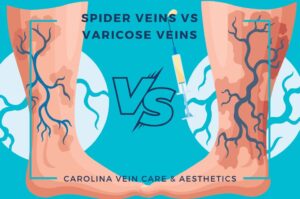
Spider Veins vs. Varicose Veins
Spider veins and varicose veins are often mistaken for one another. While they may look
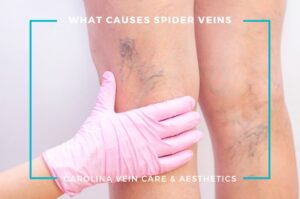
What Causes Spider Veins
Spider veins are a common concern, especially on the legs and face—whether due to discomfort

